Wanna build speed, strength, and endurance without beating up your joints, choose rowing for runners to go farther and faster.
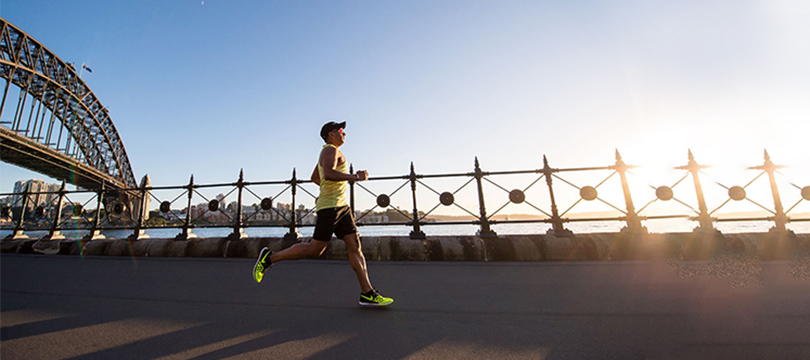
Table Of Contents
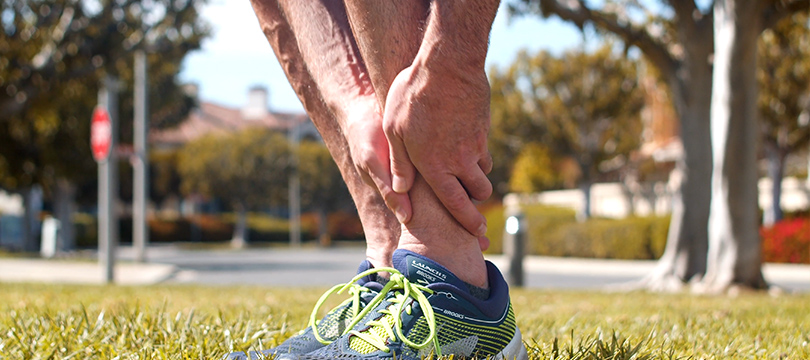
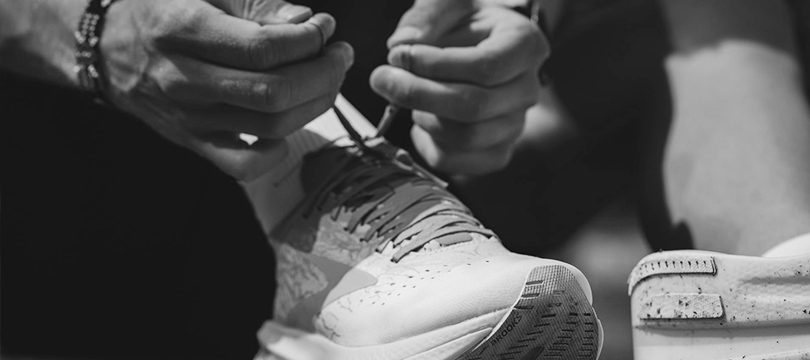 Especially for running routine in daily life, runners should not jump on the “barefoot running” bandwagon or going gaga for the ultra-light minimalist running shoes that often dominate store shelves.
Actually, 10 years ago, those kinds of shoes were worn by competitive runners for competition only. It’s advised to start with something sturdier, with more cushioning.
Especially for running routine in daily life, runners should not jump on the “barefoot running” bandwagon or going gaga for the ultra-light minimalist running shoes that often dominate store shelves.
Actually, 10 years ago, those kinds of shoes were worn by competitive runners for competition only. It’s advised to start with something sturdier, with more cushioning.
 A 2014 study of 24 people over 8 weeks found that joint torques, or rotations, in the elbow, shoulder, lumbar, and knee improved by 30 percent.
This is all thanks to the position of the body. As shown in the image below, indoor rowing is a sitting exercise, most of your weight is born by the seat on the rowing machine. Besides, your feet are fixed on the footpads. Therefore, there is little or no possibility of impact.
Moreover, a rowing machine will help you strengthen your joints, and increase mobility without causing more damage.
A 2014 study of 24 people over 8 weeks found that joint torques, or rotations, in the elbow, shoulder, lumbar, and knee improved by 30 percent.
This is all thanks to the position of the body. As shown in the image below, indoor rowing is a sitting exercise, most of your weight is born by the seat on the rowing machine. Besides, your feet are fixed on the footpads. Therefore, there is little or no possibility of impact.
Moreover, a rowing machine will help you strengthen your joints, and increase mobility without causing more damage.
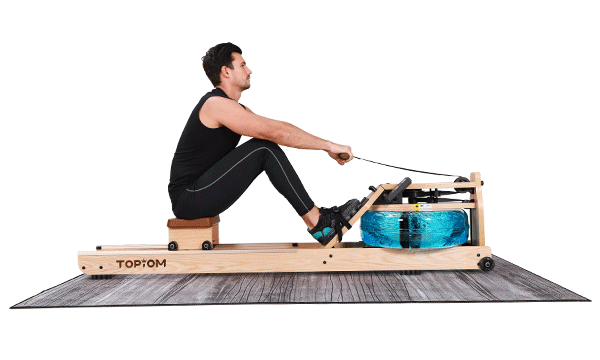 The dynamic range of motion that comes with the rowing action helps develop functional flexibility — something most runners are lacking.
Hence, there is no overuse injury or excessive strain problem resulted from repetitive motions of certain muscle groups.
The dynamic range of motion that comes with the rowing action helps develop functional flexibility — something most runners are lacking.
Hence, there is no overuse injury or excessive strain problem resulted from repetitive motions of certain muscle groups.
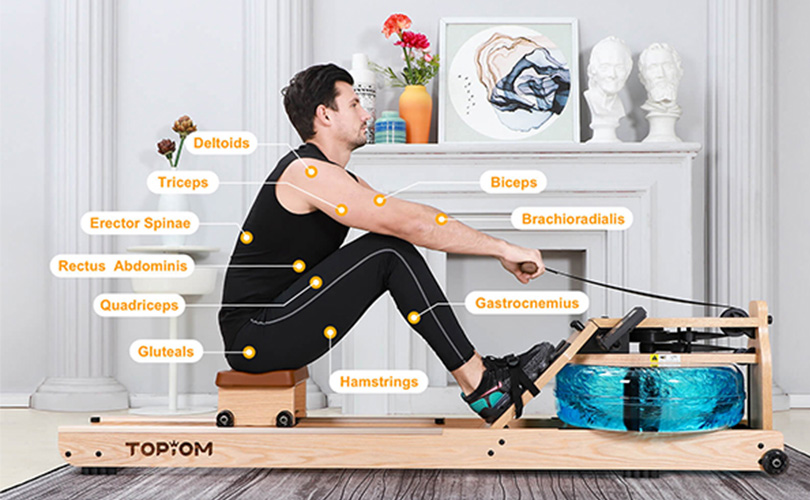 That’s exactly what runners need. Running is a full-body sport. All of your lower-body muscles—including the calf muscles, quads, and glutes—are working to propel you forward and absorb force from the ground. The position of your torso and the way your arms swing helps you move efficiently, too.
That’s exactly what runners need. Running is a full-body sport. All of your lower-body muscles—including the calf muscles, quads, and glutes—are working to propel you forward and absorb force from the ground. The position of your torso and the way your arms swing helps you move efficiently, too.
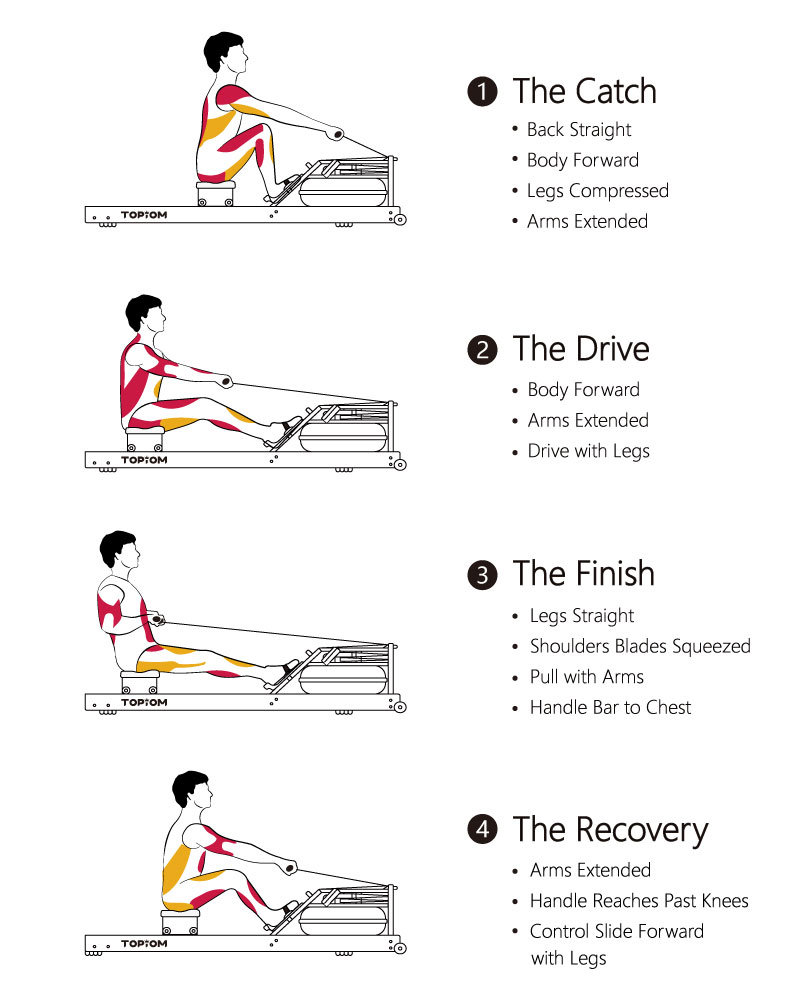 If you want a more comprehensive guide, check out our blog post: indoor rowing technique 101. A complete step-by-step guide including rowing form, breathing, power exertion, and stroke timing is provided. Additionally, for video instructions of correct rowing technique for beginners, you can learn more here.
If you want a more comprehensive guide, check out our blog post: indoor rowing technique 101. A complete step-by-step guide including rowing form, breathing, power exertion, and stroke timing is provided. Additionally, for video instructions of correct rowing technique for beginners, you can learn more here.

Table Of Contents
- What Do Runners Need?
- Common Running Injuries and Causes
- Benefits of Rowing for Runners
- How to Reap the Benefits of Rowing for Runners?
What Do Runners Need?
· Stamina
Aerobic training contributes up to 85-99% of the energy needed to race. With good stamina, you can easily achieve your goal of running farther in 2021.· Strong core and glutes
The glutes and core are key players that all runners should focus on strengthening. With strong glutes and core, it’s easier for runners to stay upright. Even when you’re tired, it helps you avoid leaning too far forward from your hip, which can lead to injury.· Flexibility
Flexibility plays an important role in running. Any restrictions on the flexibility of your muscles, tendons, ligaments, and joints will limit your range of motion, affect your performance, and even cause injury.· Coordination
When the upper and lower body work together in unison, it spreads the work of running over the whole body and takes the load off any single muscle group. The general rule is that your upper body and lower body should be doing equal amounts of work.Common Running Injuries and Causes
Running is a great way to boost your cardio fitness. It primarily strengthens the muscles in the lower body like your glutes, quads, and hamstrings. However, running is not just a challenging cardiovascular workout. You can also feel tough on muscles and joints, especially your knees. Check below some common running injuries and relevant causes. Are you one of the runners suffering joint or knee problems like sprains, strains, torn cartilage, arthritis, and osteoarthritis? These problems suffered by runners are normally caused by the following aspects:#1. Poor running form
Poor running form will hold you back from getting farther and faster. Even worse, it will lead to high impact on your joints and muscles.#2. Running too much too soon
Running too much too soon can strain muscles, joints, and ligaments that aren’t yet strong enough to handle the workload.
#3. Hitting the trails or roads in the wrong shoes
Another cause of running injury is hitting the trails or roads in the wrong shoes — or no shoes at all. Especially for running routine in daily life, runners should not jump on the “barefoot running” bandwagon or going gaga for the ultra-light minimalist running shoes that often dominate store shelves.
Actually, 10 years ago, those kinds of shoes were worn by competitive runners for competition only. It’s advised to start with something sturdier, with more cushioning.
Especially for running routine in daily life, runners should not jump on the “barefoot running” bandwagon or going gaga for the ultra-light minimalist running shoes that often dominate store shelves.
Actually, 10 years ago, those kinds of shoes were worn by competitive runners for competition only. It’s advised to start with something sturdier, with more cushioning.
Benefits of Rowing for Runners
There seems to be an endless list of benefits of rowing. But are you aware of the benefits of rowing for runners specifically? Runners can actually benefit a lot from doing rowing exercises. Here are just some of them:Rowing for Runners: The Low Impact Active Recovery
Not everyone is prepared to run anytime. But everyone does want to keep fit and be prepared for the next running race. If you are one of the runners who are not in the state of running, diversify your training routine by adding rowing. In contrast to running, rowing is low impact and easy on your joints. It’s a great way to boost your cardio fitness, avoid re-injury and increased knee pain. You can do it indoors as well as outdoors, and the benefits would be the same.Joint friendly
Unlike the resistance integral to running, rowing is a smooth, rhythmic motion that puts minimal load on your joints. It is much safer for your body whilst giving you a great workout. Thus, it is a perfect cross-training for runners with joint issues to get a break from running while shaping and toning the total body. A 2014 study of 24 people over 8 weeks found that joint torques, or rotations, in the elbow, shoulder, lumbar, and knee improved by 30 percent.
This is all thanks to the position of the body. As shown in the image below, indoor rowing is a sitting exercise, most of your weight is born by the seat on the rowing machine. Besides, your feet are fixed on the footpads. Therefore, there is little or no possibility of impact.
Moreover, a rowing machine will help you strengthen your joints, and increase mobility without causing more damage.
A 2014 study of 24 people over 8 weeks found that joint torques, or rotations, in the elbow, shoulder, lumbar, and knee improved by 30 percent.
This is all thanks to the position of the body. As shown in the image below, indoor rowing is a sitting exercise, most of your weight is born by the seat on the rowing machine. Besides, your feet are fixed on the footpads. Therefore, there is little or no possibility of impact.
Moreover, a rowing machine will help you strengthen your joints, and increase mobility without causing more damage.
Total body workout instead of repetitive motions of local muscles
Rowing is a total body workout. It involves all the major muscles in your body to create force. This low-impact seated exercise strengthens areas of the body that are weak in runners, such as glutes, hamstrings, and both upper and lower back muscles. Incorporating rowing into your routine can build the backs of your legs, which can help prevent injuries in the future. The dynamic range of motion that comes with the rowing action helps develop functional flexibility — something most runners are lacking.
Hence, there is no overuse injury or excessive strain problem resulted from repetitive motions of certain muscle groups.
The dynamic range of motion that comes with the rowing action helps develop functional flexibility — something most runners are lacking.
Hence, there is no overuse injury or excessive strain problem resulted from repetitive motions of certain muscle groups.
Rowing for Runners: The Perfect Active Recovery
It’s an ideal workout because it’s a non-weight bearing exercise. As the rowing motions burn serious calories without putting added stress on your joints. It allows you to control the movement and pace, and is a great exercise to turn to for active recovery. This exercise is recommended for rehabilitation after joint surgeries like endoprosthesis of the hip as the safest and most efficient. In addition, it’s sometimes recommended as an exercise option for people with early stages of osteoarthritis or arthritis to stay in shape. It’s also good for you if you’re recovering from an injury or battling with other aches and pains. Increasingly, runners are doing indoor-rowing workouts for cross-training and injury rehab. Rowing offers a low-impact aerobic (or anaerobic) alternative to running, with most of the fitness gains transferring easily. When you row properly and maintain a relaxed body posture, you are at the lowest risk of feeling a negative impact. Rowing is a godsend for the most fragile at the knees, hips, ankles, or shoulders. If you are looking for a low-impact yet all-round sport, the rowing machine is for you!Rowing for Runners: The Ultimate Full-Body Cross-Training
In addition to serving as low-impact cross-training, rowing also works all the different major muscle groups. In a study from the English Institute of Sport, researchers found that the rowing machine engages 86 percent of the muscles in your body. Aside from toning your legs, it works all the major muscles in your body if done correctly. It targets the glutes, hamstrings, quads, core, back, shoulders, and of course, arms. That’s exactly what runners need. Running is a full-body sport. All of your lower-body muscles—including the calf muscles, quads, and glutes—are working to propel you forward and absorb force from the ground. The position of your torso and the way your arms swing helps you move efficiently, too.
That’s exactly what runners need. Running is a full-body sport. All of your lower-body muscles—including the calf muscles, quads, and glutes—are working to propel you forward and absorb force from the ground. The position of your torso and the way your arms swing helps you move efficiently, too.
How to Reap the Benefits of Rowing for Runners?
Now that we’ve been aware of the benefits of rowing, are you keen on reaping the benefits? Let’s hop on a rowing machine and start the impact-free cross training to become a stronger, healthier, and happier runner in 2021!Quick Guide to Correct Indoor Rowing Technique
Master the correct technique is always important to help you get started and achieve your fitness goal without risking injury. The key to rowing is to understand the motion and the different positions you’re in when rowing. A full “stroke” of rowing can be broken down into four distinct phases from beginning to end – the catch, drive, finish, and recovery. Check below a quick beginner’s guide to correct rowing technique. If you want a more comprehensive guide, check out our blog post: indoor rowing technique 101. A complete step-by-step guide including rowing form, breathing, power exertion, and stroke timing is provided. Additionally, for video instructions of correct rowing technique for beginners, you can learn more here.
If you want a more comprehensive guide, check out our blog post: indoor rowing technique 101. A complete step-by-step guide including rowing form, breathing, power exertion, and stroke timing is provided. Additionally, for video instructions of correct rowing technique for beginners, you can learn more here.
Rowing for Runners: Sample Cross-Training Workouts
No matter how many years go by, two goals continue to come up: running farther and running faster. You may try the following rowing workouts to up your running game in 2021.Rowing Workout for Speed
Sprints are sprints, whether you’re on a track or a rower. It’s challenging, and you should feel breathless and in need of recovery at the end of it. Do each sprint effort should be at a stroke rate of 28 to 33 strokes per minute with power, if possible. Try to finish each sprint effort in the same amount of time.- 5 minute warmup
- 8 x 400 meter row effort followed by 1 minute of recovery
- 5 minute cooldown
Rowing Workout for Endurance
Think of this like ladder intervals on the treadmill—it’ll help build your capacity to withstand uncomfortable durations of intensity. Each “ON” effort should be at a stroke rate of 24 to 27 strokes per minute and at about 65 to 75 percent of your max intensity.- 5 minute warmup
- 1 minute ON followed by 1 minute of recovery
- 2 minute ON followed by 2 minute of recovery
- 3 minute ON followed by 3 minute of recovery
- 4 minute ON followed by 4 minute of recovery
- 3 minute ON followed by 3 minute of recovery
- 2 minute ON followed by 2 minute of recovery
- 1 minute ON followed by 1 minute of recovery
- 5 minute cooldown
Rowing Workout for Strength
Let the rower be a tool within a larger workout. Jumping on and off the rower combines cardio with even more muscle-building opportunities.- 5-minute warmup
- 9-minute AMRAP (goal: Complete at least 3 full rounds of the following circuit)
- 200-meter row effort at 24 to 27 strokes per minute with power
- deadlifts X 10
- bent-over rows X 10
- push-ups X 10
- Core challenge: 30-second forearm plank + 30 seconds of mountain climbers
- 5-minute cooldown


